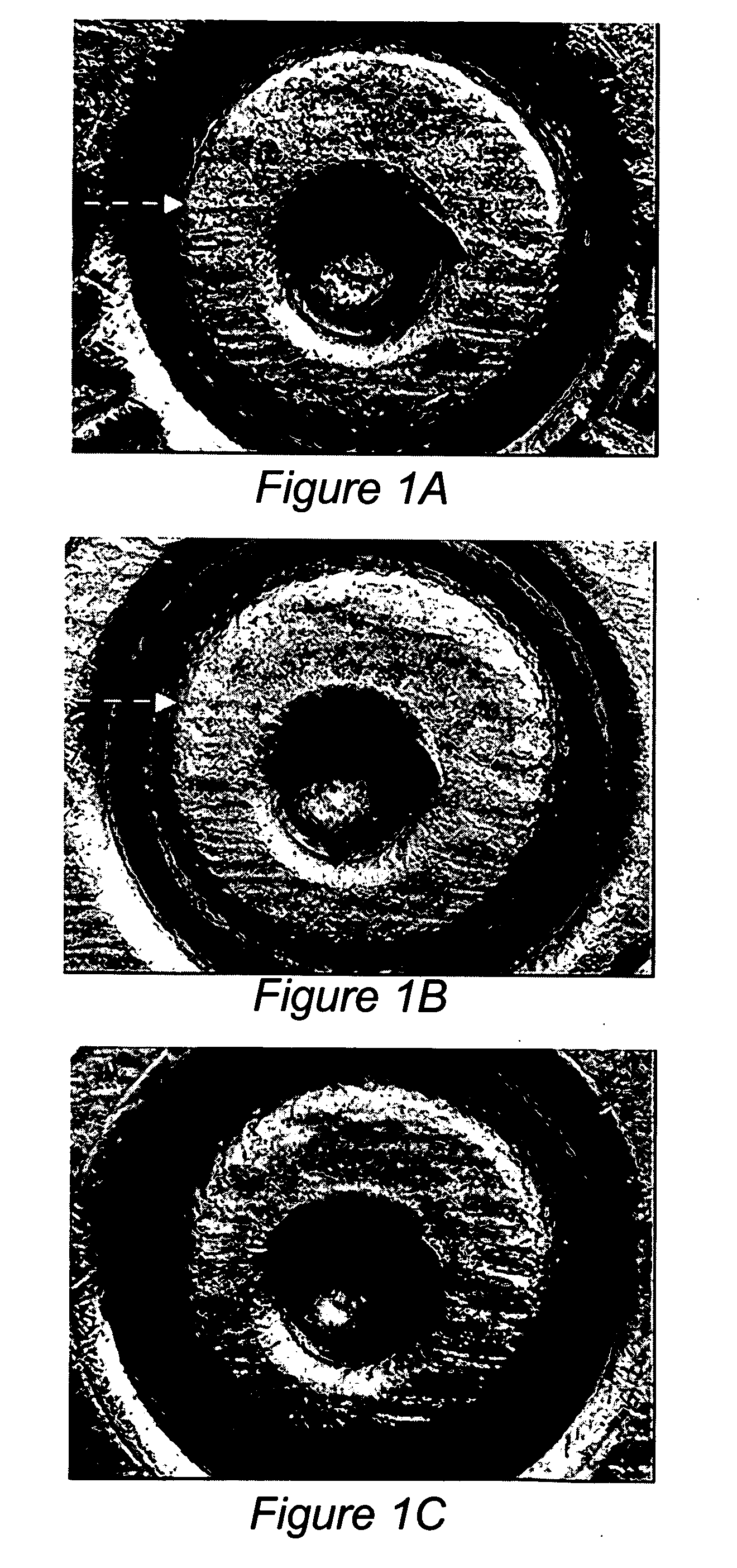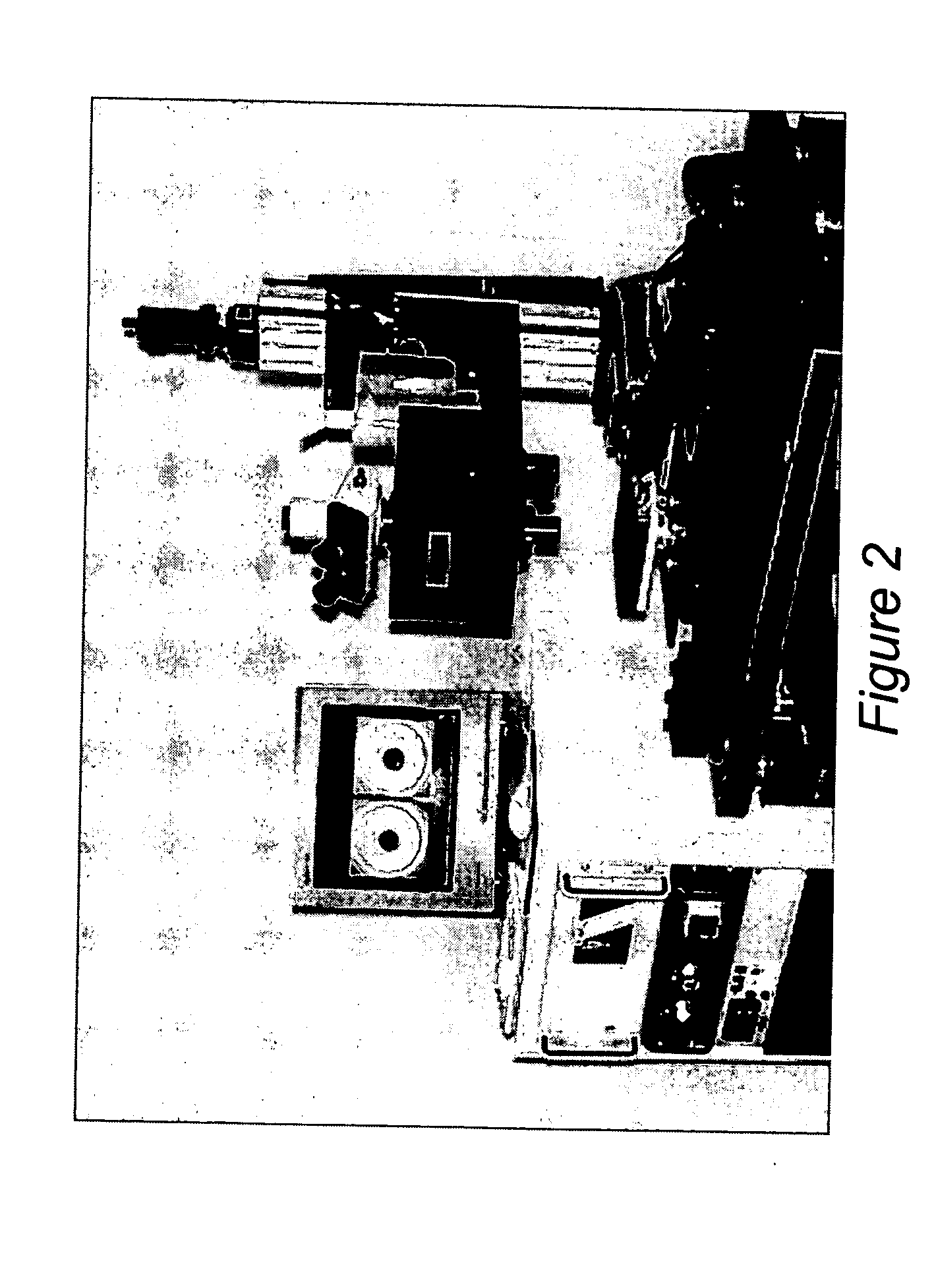Method and apparatus for alignment, comparison & identification of characteristic tool marks, including ballistic signatures
a technology of characteristic tool marks and alignment methods, applied in the field of method and apparatus for alignment, comparison & identification of characteristic tool marks, including ballistic signatures, can solve the problems of not using infrared images for this comparison test, and achieves the effects of minimizing training and time, easy to clean up debris, and little eviden
- Summary
- Abstract
- Description
- Claims
- Application Information
AI Technical Summary
Benefits of technology
Problems solved by technology
Method used
Image
Examples
Embodiment Construction
—USING INFRARED IMAGES TO REFINE VISIBLE IMAGE DETAILS FOR BALLISTICS IDENTIFICATION IMAGE AND INFORMATION CAPTURE
[0167] A ballistic item 10 is placed in a holder 12 and surrounded by a shroud 14 covering it and an infrared camera 16 such that external lighting and heating sources are blocked. The camera focus mechanism 18 is varied over a range such that all details of the infrared image of the ballistic item are clearly captured in a sequence of infrared images 20.
[0168] Optionally, one or more spectral filters 30 can be installed and additional sequences of infrared images obtained. Optionally, a heater 32 can be used to raise the temperature of the ballistic item and additional sequences of infrared images obtained for the item at the elevated temperature and as it cools.
[0169] A controlled light source 110 is then turned on to illuminate the ballistic item and a video camera 116 is used to produce a sequence of visible images 120 by varying the focus mechanism 118.
[0170] Eac...
PUM
 Login to View More
Login to View More Abstract
Description
Claims
Application Information
 Login to View More
Login to View More - R&D
- Intellectual Property
- Life Sciences
- Materials
- Tech Scout
- Unparalleled Data Quality
- Higher Quality Content
- 60% Fewer Hallucinations
Browse by: Latest US Patents, China's latest patents, Technical Efficacy Thesaurus, Application Domain, Technology Topic, Popular Technical Reports.
© 2025 PatSnap. All rights reserved.Legal|Privacy policy|Modern Slavery Act Transparency Statement|Sitemap|About US| Contact US: help@patsnap.com



